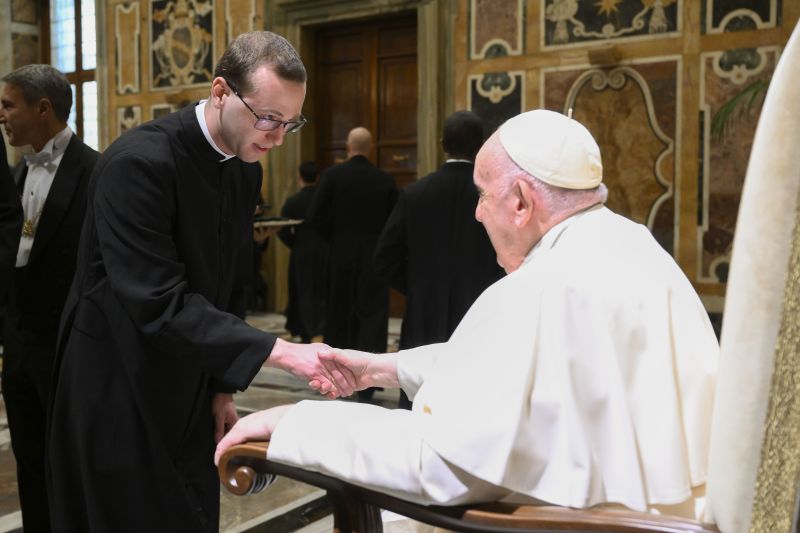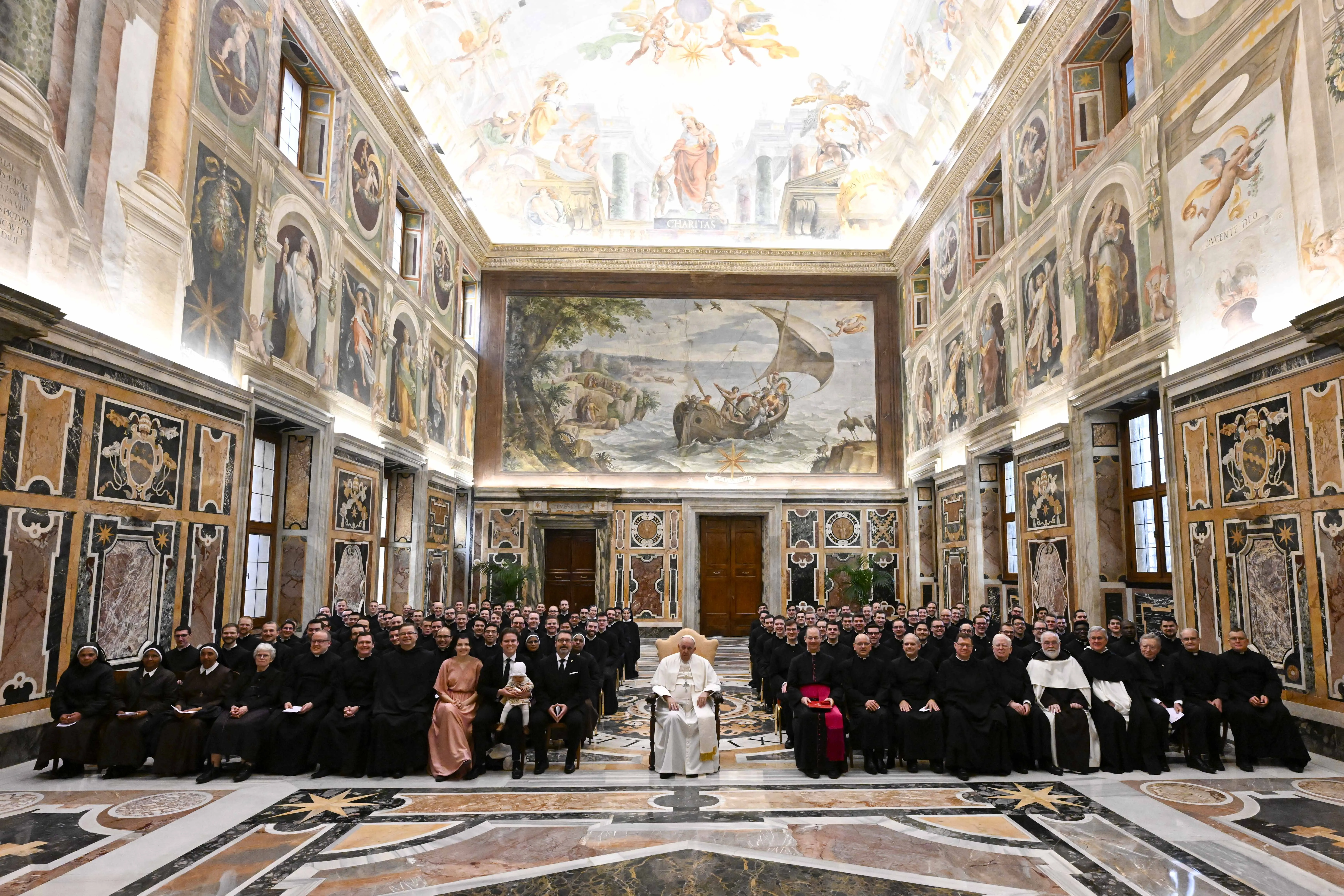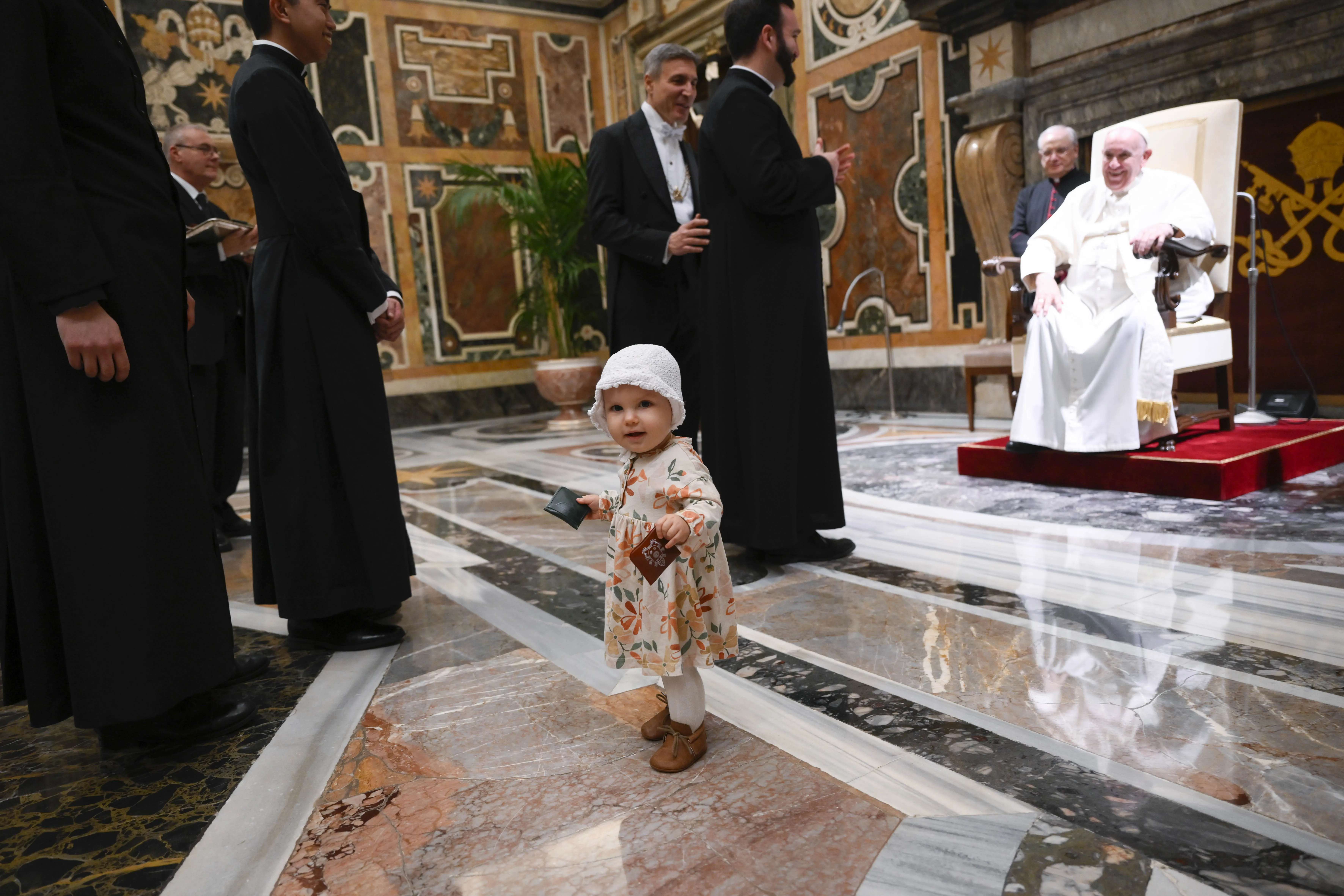
Rome Newsroom, Dec 3, 2024 / 06:00 am (CNA).
Close to the Pantheon in the heart of Rome, one of the city’s oldest and most popular ecclesiastical tailors is ready for Saturday’s consistory for the creation of new cardinals.
It wasn’t long after Pope Francis announced that he would be making 21 new cardinals in December that the Gammarelli tailor adjusted its window to feature the traditional dress of cardinals.
“It’s a bit of a historical showcase because not all of these items are still used,” Gammarelli manager Alessia Gammarelli told EWTN News. Gammarelli, with her cousins Lorenzo and Massimiliano, are the sixth generation to run the family business.
Gammarelli explained that while the black cassock with the red piping is still worn by cardinals today, the mantelletta, or knee-length cloak, has fallen out of use.
The red shoes worn by Pope Benedict XVI during his pontificate are also no longer in fashion, but Gammarelli said she likes to include out-of-use clerical wear in the window for historical interest.

Gammarelli tailor shop has made the ecclesiastical garments of hundreds, perhaps thousands, of priests, bishops, and cardinals since it was opened in 1798 by Giovanni Antonio Gammarelli as a tailor for Roman clergy.
The tailor has also sewn the garments of the popes starting with Pope Pius XI in the 1920s.
Today, Gammarelli’s most famous client is Pope Francis, who has chosen to simplify papal garb. The shop receives orders for the pope from his secretaries and the new clothes are completed and delivered to the Vatican in about a week, Gammarelli said.
In a Dec. 7 ceremony at the Vatican, the new cardinals will dress for the first time in the scarlet red cassocks that characterize these special assistants and advisers of the pope.
The red cassock, used for important liturgies and ceremonies, is accompanied by a shoulder cape called a “mozzetta” and by a white linen vestment with lace borders called a “rochet.” A red zucchetto, which is a small, round skull cap, completes the look.
The cardinals will receive their biretta, which is a square, red hat, and a ring from Pope Francis at the consistory.
For more everyday occasions, cardinals wear a black cassock with red trimming and a red sash.
Meanwhile, Gammarelli is working hard to fulfill any garment orders it may have received from the new cardinals, most of whom only found out they would be joining the College of Cardinals two months before the ceremony.
“It is still an artisanal company. We make all these clothes, they are all made here in the workshop by us, as well as all the sacred vestments that we cut and make ourselves,” Gammarelli told EWTN News, explaining that it is not easy to find skilled seamsters and seamstresses today.
“We try to continue this beautiful tradition. It’s not easy, though we try to do what we can,” she said.

Ditta Annibale Gammarelli, as the shop is formally called, was added to a list of historic shops in Rome in 2000. It is believed it may be the city’s oldest shop to still be managed by direct descendants of its founder.
Another important feature always displayed in the tailor shop’s window is a white papal zucchetto.
Gammarelli said “often people come here because they want to give the Holy Father a new zucchetto, to make an exchange with his [zucchetto]. And so they buy [one] from us, we put it in a nice little box and then they do it, always hoping to make an exchange with the pope when they meet him and get the one he was wearing.”
If you value the news and views Catholic World Report provides, please consider donating to support our efforts. Your contribution will help us continue to make CWR available to all readers worldwide for free, without a subscription. Thank you for your generosity!
Click here for more information on donating to CWR. Click here to sign up for our newsletter.








Leave a Reply